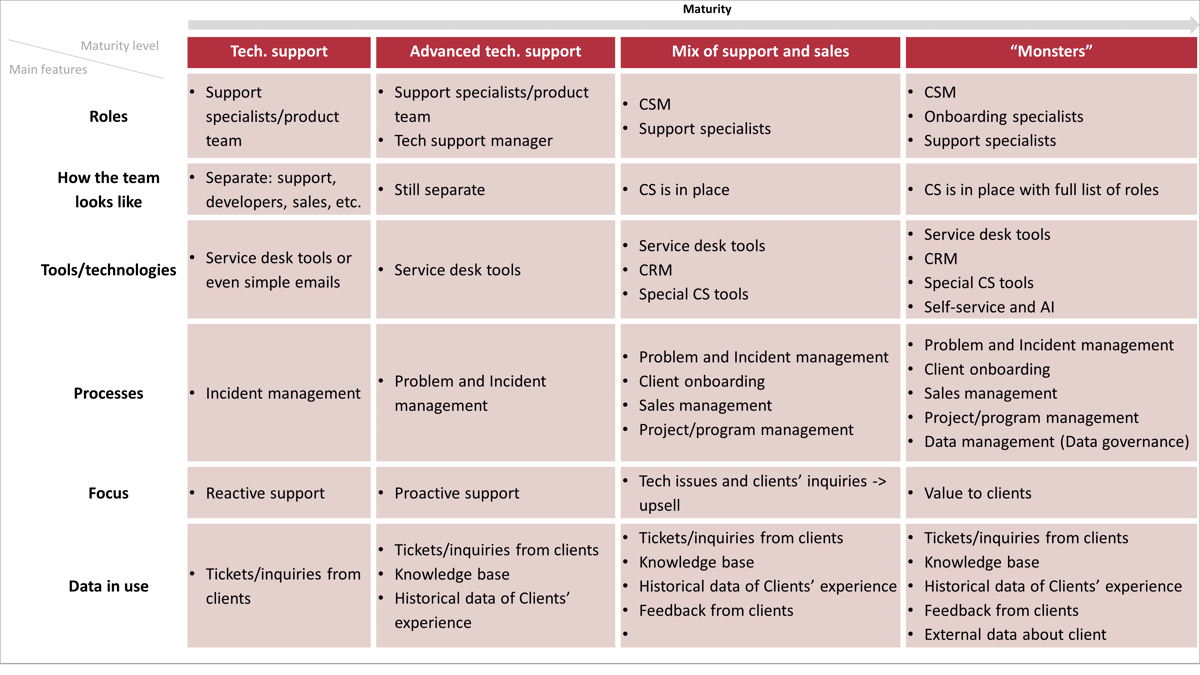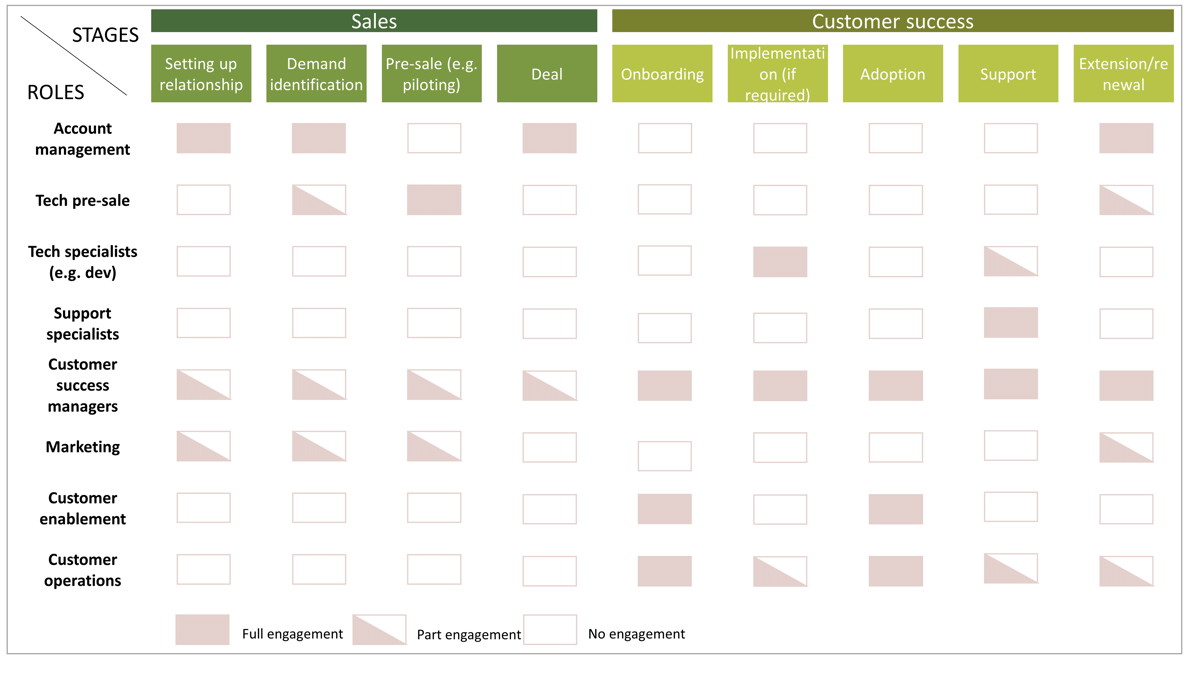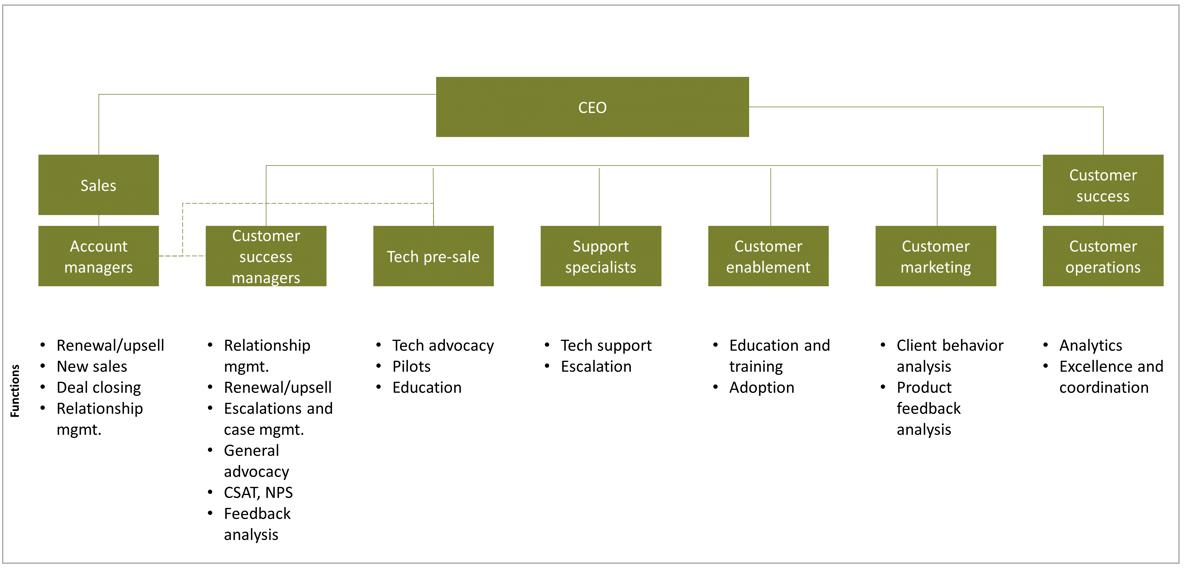The #1 thing that has made us successful by far is obsessive compulsive focus on the customer
- Jess Bezos — Amazon Founder
Briefly, Customer Success (CS) is a complex of approaches to make your client happy. When are the clients happy? Right, when they achieve their business goals. So, if the clients get what they want by using your digital product or service, your company will get an additional or at least a stable revenue. These are the main reasons for such a win-win approach:
1. The satisfied client won’t leave you (churn decrease) and the company doesn’t have to spend money on the new sales process. Check the statistics below;
2. When we work closely with clients and learn the problems and requirements they face, we can get the opportunities to upsell (if needed);
3. The company receives a constant feedback and can enhance the product. It has a positive impact in the long term.
In most cases, companies go forward with CS when they focus on the SaaS model. I believe, such a complex approach is useful in any outsourcing business or even in cases where in-house IT departments provide some services to the business departments. Actually, most IT companies have always had a post-sales customer service and an account management, in which a relationship management has been a key to success. Nevertheless, business models are changing and SaaS/subscription is getting more popular. This was the impetus for IT companies to start accumulating customer data to understand whether they are satisfied with their product or have any special requirements. As a result, we have a CS concept in which the support, product, sales and marketing teams work together for the benefit of the client.
 Customer success requires the changes in organizational and process models
Customer success requires the changes in organizational and process models
Here is a “map” of different aspects of CS and correlated maturity levels, which I saw in B2B businesses.

Trends and statistics
There are some statistical facts that prove the usefulness of CS:

Resources:
(1) Forrester Research. The link.
(2), (3), (4) Invesp, Khalid Saleh. Link1 and Link2.
(5), (6) Patrick Campbell. The link.
1. Data is a key (dashboards/analytics)
When you have a SaaS business model, there are plenty of data that can unlock insights. So, analytics and dashboards are a “must have”.
What can be included in CS dashboard: General info, which covers the product like churn rate, new clients, upselling/downselling, MRR, CSAT, NPS.
2. Omnichannel support
This trend is general for client communication in any industry. Nowadays people have a huge number of offline and online communication options like web sites, chats (incl. chat bots), telephones, etc. Moreover, each person has his own preferences. Therefore, we need to offer all such options to provide a better service. At the same time, it is important to organize a convenient landing of requests from all these channels in one place within the organization. It can help to optimize teamwork and transparent reporting.
3. Self-service
Providing such an option is useful for two main reasons:
- some clients prefer not to communicate with the support specialists (hey introverts ;) )
- self-service reduces the load on the service team
However, we must remember that self-service has a side effect: we need to organize the data and processes to configure it.
4. Personalization
It’s always nice to see recommendations tailored to your needs. Client support (as part of customer success) is not an exception. It provides personalized offers, recommendations and even advertising.
Actually, personalization is a derivation from the trend #1 from this list, as it requires a 360-degree view of the client’s actions.
The organizational model can vary from company to company, depending on the business maturity, the size of the organization, and the industry.
First of all, let’s define what kind of job Customer Success Manager (CSM) and others do and what is the difference in comparison to pure support.
All clients and IT companies have a certain cycle and stages in terms of using an IT product or service. Here is an illustration:
 Customer success roles and the position on their client’s lifecycle
Customer success roles and the position on their client’s lifecycleThe organizational structure could look like that:
 Example of Customer Success organizational model
Example of Customer Success organizational model
I have over 15 years of experience in the IT industry and have “played” the roles of a helpdesk specialist, a system administrator, a programmer, a B2B salesperson, an engineering manager and finally a consulting director. During this time, I have constantly communicated with external and internal customers, which has led me to a simple conclusion: We must be valuable to our clients in order to make money. In my opinion, the paradigm of “Customer Success” reflects this idea best.
Find out if MentorCruise is a good fit for you – fast, free, and no pressure.
Tell us about your goals
See how mentorship compares to other options
Preview your first month
